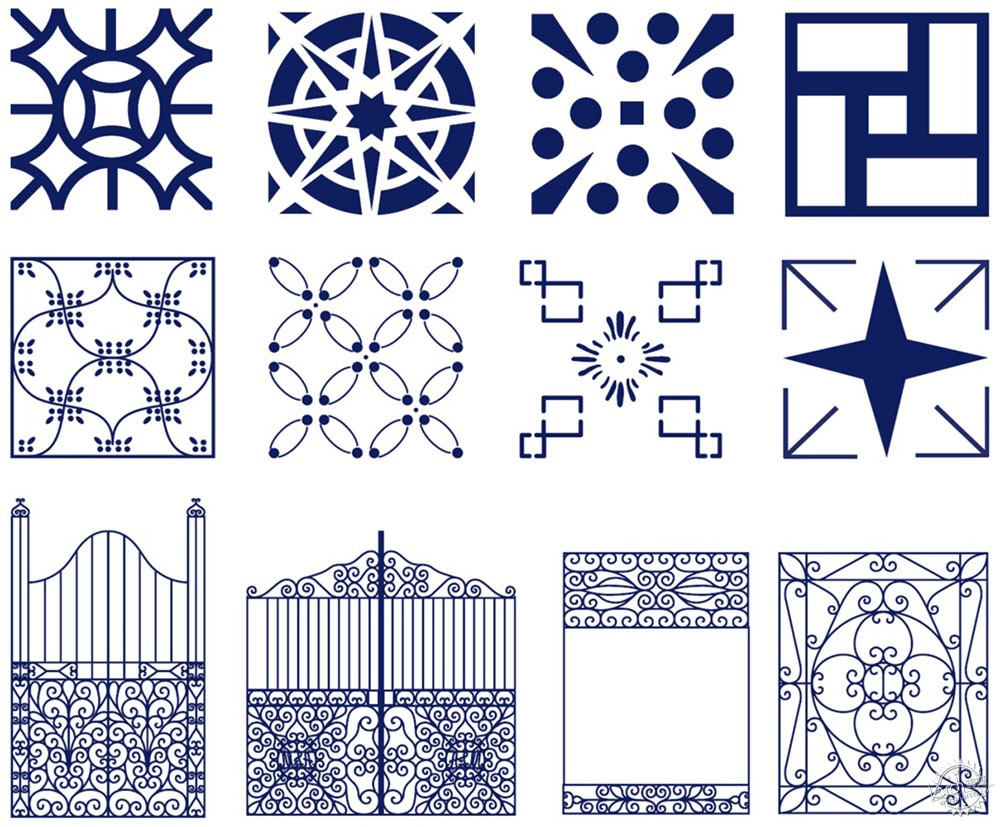
© Renata Paes
Cobogós和瓷砖:设计师真实表达了巴西奥林达建筑
Cobogós and Tiles: Designer Affectively Maps the Architecture of Olinda, Brazil
由专筑网邢子,小R编译
在巴西伯南布哥州的奥林达历史中心,建筑借鉴了自然界的形状和色彩,阳台上的Cobogós穿孔看起来像圆形的叶子和水果,而栏杆则是螺旋形的,带有一丝扭曲的花朵。大地和天空的颜色也重新出现在殖民时期房屋的地板、后院、厨房和房间里,给它们带来或棕或蓝的色彩。
这种建筑风格贯穿在平面设计师Renata Paes的作品之中。Renata出生于奥林达郊区,在童年时的房屋和街道上装饰的自然设计中,她用细心的眼睛探索这个世界。她的父亲Antenor是一位建筑保护专家,他经常牵着她的手走过很长的路,去发现奥林达上城区动人的建筑细节,这里的历史中心在1968年被Iphan(国家历史和艺术遗产研究所)认可,1982年被联合国教科文组织宣布为人类文化遗产。
“我从小就听父亲讲瓷砖和栏杆的故事,以及保护当地建筑的重要性。当我开始选择毕业作品时,我意识到这种图形记忆和我童年记忆的关联,所以我决定把自己的职业奉献给这些或许正在退化的元素。”她说。
这一奉献的结果是一幅她的建筑记忆与伯南布哥市的建筑记忆交织在一起的图。2017年,她在伯南布哥联邦大学(UFPE)完成了她的设计课程,推出了《奥林达建筑的图形记忆》,这是一个敏感的摄影记录,记录了一些构成该地区特征的元素。
In the Historic Center of Olinda, a Brazilian municipality in the state of Pernambuco, architecture borrows shapes and colors from nature; cobogós perforations on the balconies look like round leaves and fruits, while the railings spiral with a hint of twisted flowers. The colors of the earth and sky also reappear in the floors, backyards, kitchens, and rooms of colonial houses, coating them in shades of brown and blue.
This architecture runs through the veins of graphic designer Renata Paes. Born on the outskirts of Olinda, Renata grew up with attentive eyes amidst the natural designs that adorned the houses and streets of her childhood. Her father, Antenor, a conservation architect, used to lead her by the hand on long walks, pointing out the moving architectural details of the upper town of Olindean, whose historic center was recognized by the Iphan (Institute of National Historic and Artistic Heritage) in 1968 and declared a Cultural Heritage of Humanity by UNESCO in 1982.
"I grew up hearing my father's stories about tiles and railings, and the importance of preserving local architecture. When I had to choose my graduation work, I realized how much this graphic memory permeated my childhood, so I decided to dedicate myself to these deteriorated elements," she says.
This dedication resulted in an map of her architectural memories intertwined with those of the city of Pernambuco. In 2017, she completed her Design course at the Federal University of Pernambuco (UFPE) with the launch of Graphic Memory of Architecture in Olinda, a sensitive photographic record of some of the elements that make up the identity of the region.
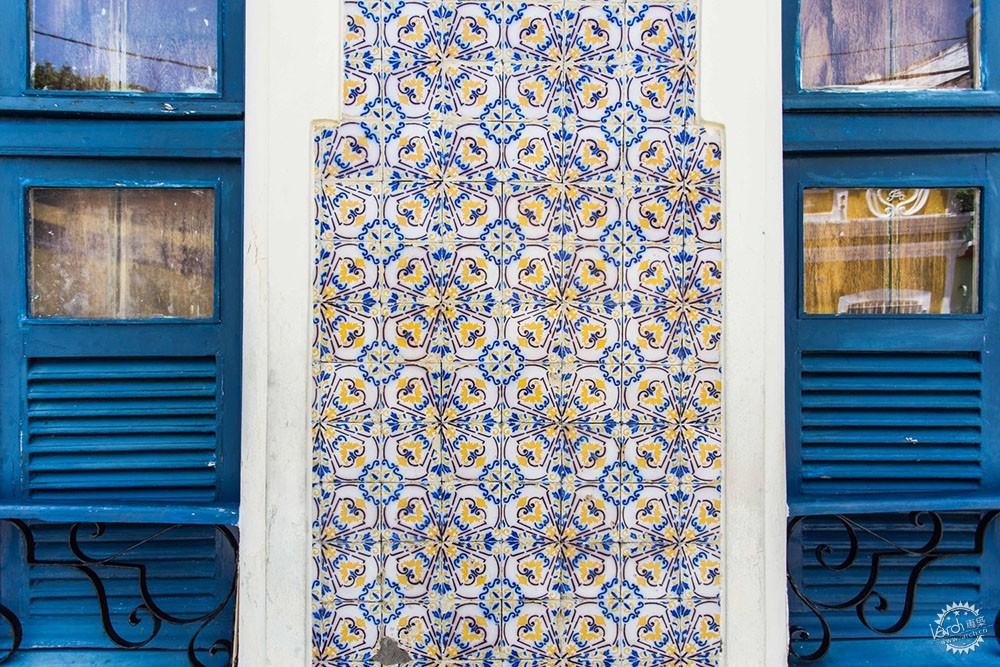
Tiled facade in Olinda. Image © Thiago Duarte
漫无目的的骑行:创作的起源
为了深入研究奥林达的图形记忆,Renata首先按照父亲教给她的方法,在城市里四处游荡。绘图的第一部分是走过她成长的街道,沿着与她日常生活中的小路走,这些与平日并没有什么不同:“我重复着一些经历和路径,比如把我带到朋友家、市场或酒吧的小路。”
在旅途中,Renata对最吸引她注意力的元素进行了摄影记录。除了她习惯看到的建筑部分,如瓦片或Cobogós,她还拍摄了房屋的外墙,从殖民地建筑到新古典主义建筑,以及一些涂鸦和绘画,这些都是城市的色彩。
看着这15条地图街道上拍摄的两百多张照片,Renata发现其中有一个共同的设计特点,模块化的图形表达。设计师解释道:“模块是在面板上重复的建筑元素,但它们也可以单独使用,就像瓷砖一样。”
随后,她选择了四种部件进行表达:Cobogós、瓷砖、格栅和液压砖。
Drift Rides: How the Catalog Begins
To delve into Olinda's graphic memory, Renata started by doing what her father taught her: she wandered around the city. The first part of the mapping consisted of walking through the streets where she grew up, following paths not very different from those that were part of her daily life: "I repeated experiences, such as the paths that led me to a friend's house, a market, or a bar."
During the journeys, Renata made photographic records of the elements that most caught her attention. In addition to the architectural objects that she was used to seeing, such as tiles or cobogós, she also photographed the facades of houses –from colonial constructions to neoclassical buildings – as well as some of the graffiti and paintings that color the city.
Looking at the more than two hundred photographs taken across the 15 mapped streets, Renata noticed in them a common design denominator: modular graphic expressions. The designer explains: "The modules are architectural elements that are repeated in panels, but they can also work in isolation, as in tiles."
She then chose four artifacts to map: cobogós, tiles, gratings, and hydraulic tiles:
Cobogós
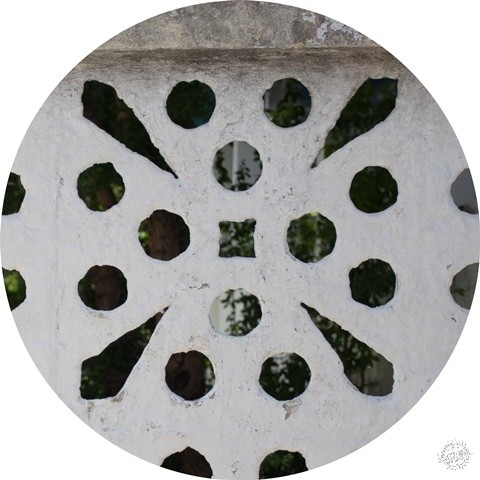
© Thiago Duarte
“这是一个原汁原味的伯南布哥元素,它的名字是它的三个创造者的首字母缩写:CO-imbra,BO-eckmann和GO-és。CO-imbra、BO-eckmann和GO-és,它的灵感来自于阿拉伯木制建筑元素muxarabi,它的功能是将光线带入室内并能有效通风,同时保护隐私。我记录的大部分Cobogós都应用在墙面上。”
Cobogó
"An original Pernambuco element, its name is an acronym of its three creators: CO-imbra, BO-eckmann and GO-és. It is inspired by the muxarabi, an Arabic wooden architectural element. Its function is to bring light and ventilation into the house while still preserving privacy. Most of the cobogós I documented were on the walls."

Image © Renata Paes
栏杆

© Thiago Duarte
“栏杆是一种保护部件,与Cobogós非常相似,风和阳光可以轻松穿越。栏杆有两种类型:一种是有机的、蜿蜒的,主要出现在老建筑中;另一种是几何的,一般出现在远离市中心的新建筑中”。
Railings
"The railing appears as a protective element very similar to the cobogó, allowing the entry of the wind and sunlight. There are two types of railings: the organic and sinuous, which are mainly found in old buildings, and the geometric, which are seen in newer buildings far from the city center."

Image © Renata Paes
瓷砖
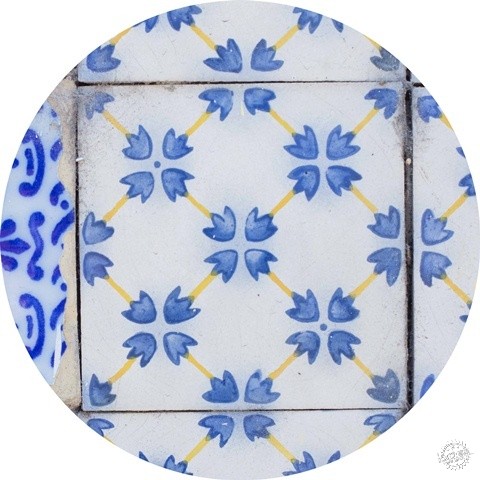
© Thiago Duarte
“瓷砖是由殖民时代的葡萄牙船只带来的,它可以保护外墙并反射热量。这些设计有葡萄牙和法国的影响,大多数以花卉或有机主题。蓝色和白色是最主要的颜色,其次是黄色”。
Tiles
"Brought by Portuguese ships in colonial times, tiles protect the façade and reflect heat. The designs have Portuguese and French influences, most with floral or organic themes. Blue and white are the predominant colors, followed by yellow."

Image © Renata Paes
液压砖

© Thiago Duarte
“液压砖是一种对环境影响小的地面材料,它是在水中固化的,跳过了烧制阶段,它用天然材料制成,在压力机中成型,然后在水中浸泡24小时。它可以作为大理石和烧制涂料的替代品”。
Hydraulic Tiles
"Considered a flooring material with low environmental impact, the hydraulic tile is cured in water, skipping the fire stage. It is made with natural materials, placed in a press, and then immersed in water for 24 hours. It serves as a substitute for marble and burnt coatings."

Image © Renata Paes
闲话家常,并进入建筑:从与奥林达的街坊们相熟开始
如果说第一部分的描述集中在旅途和摄影记录中,那么第二部分则是从打开房屋的门开始,从这些房屋中绘制出四个模块化元素。“开始只是在聊一些家常。”Renata回忆起当时的情景时说,“我会走进别人的房子,他们会指给我看他们的邻居谁有这样的瓷砖,然后会把我带到Cobogós后面的另一个角落。我在城市里挨家挨户地转,并展示照片,听着这样的陈述。‘啊,我母亲有一栋这样的房子!'或者'我祖母家的天井也有这样的瓦片!’”
基于感情,在沙发上喝咖啡,设计与人之间关系的发展,产生了超越传统学术的可塑性描述。“我利用哲学家吉勒德勒兹和费利克斯瓜塔里的理论,整理出一种情感制图。在其中,研究者和环境是密切相关的,所有被发现的人,从房子的居民到中心的卖爆米花的人,都是珍贵知识的生产者。”
保护遗产的目录
通过与这些建筑物品的邻居和主人交谈的方法,发现居民和他们的遗产之间存在着感情,这可以引发强烈的记忆,甚至是那些已经失去的东西。比如有的房子,在走廊和卧室里发现了液压砖,但厨房里却没有,而是铺上了新的瓷砖。Renata指出,虽然奥林达的房屋已经作为历史遗迹受到保护,但在保留其特色方面却受到了政策制约。
Gossip and Open Doors: Getting to Know Olinda's Neighbors
If the first part of the mapping was concentrated in wanderings and photographic records, the second was built from opening the doors to the houses from which the four modular elements were mapped. "It started as a chain of gossip," says Renata, recalling the moment. "I would go into someone's house, they would point me to their neighbor who had such a tile, which would then take me to another corner behind a cobogó. I toured the city from house to house, showing photographs and listening to statements such as: 'Ah, my mother had a house like that!' or 'My grandmother's patio had tiles like that!'"
Research based on affection, sipping a coffee on the couch, and the development of relationships between design and people has generated malleable cartography that exceeds conventional academic rigidity. "I utilized the theories of philosophers Gilles Deleuze and Félix Guatarri to put together an affective cartography. In it, the researcher and the environment are intimately related, and all the people found, from the inhabitant of the house to the popcorn seller in the center, are producers of precious knowledge."
Catalog to Preserve Heritage
The approach of talking to the neighbors and owners of these architectural objects revealed that affection exists between inhabitants and their heritage, which can trigger strong memories, even those of what has been lost. There were houses, for example, where hydraulic tiles were found in the hallways and bedrooms, but not in the kitchen, which were lined with ceramic tiles instead. Although they have been protected as a historical heritage site, the houses of Olinda have suffered political oversight regarding the preservation of their characteristics, Renata points out.
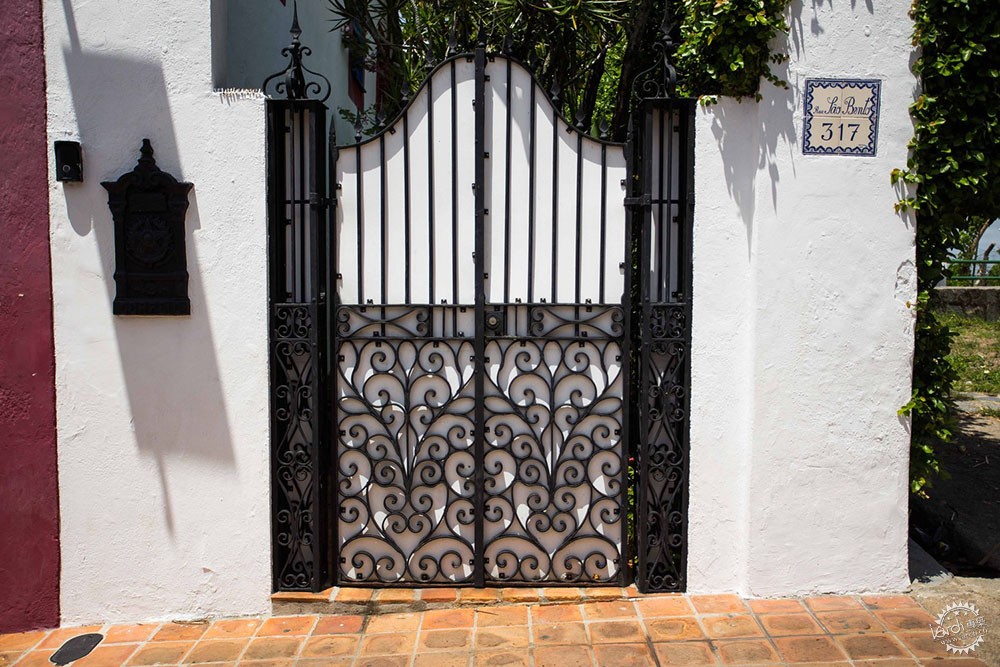
Railing gate in a house in Olinda. Image © Thiago Duarte
不仅仅是对传统建筑的影像研究,也不是单纯以完成课程为目的的作品,如今Renata将目录视为一种提高认识的工具,让居民认识到自身文化遗产的重要性,发现装饰自己房屋的物品的力量,他们可以成为刻在铁和陶瓷上的历史的真正守护者。“如果说我之前认为目录中最吸引人的部分是建筑物件,那么今天我最想强调的是,最重要的是我与邻居们的接触过程。”设计师总结道。
该目录可在Ciudades Educadoras平台上获得,展示了其所研究的四种元素的52张照片以及矢量图供公众使用。“我的目的是扩大目录,增加照片,并改进相关文本。我想更好地探索这个主题,并再次与那里的人们取得联系。最后,将其出版,让人们更了解这些建筑和情感遗产的保护。”
本文来自Portal Aprendiz。最初发表于2018年1月30日,更新于2019年10月8日。
More than an imaging study of traditional architecture or a work aimed solely at course completion, today Renata sees the catalog as an awareness-raising tool for residents to recognize the importance of their own cultural heritage. Discovering the power of the objects that adorn their houses, they can become true guardians of the history carved in iron and ceramic. "If before I thought that the most attractive part of the catalog would be the identification of architectural objects, today what I want to emphasize the most is my contact with neighbors," sums up the designer.
The catalog, available on the Ciudades Educadoras platform, presents 52 photographs of the four elements studied, as well as their vectors available for public use. "My intention is to expand the catalog, add photographs, and improve the text. I want to better explore the topic and get in touch with the people again. And then, finally, publish it to bring people closer to the preservation of this architectural and affective heritage."
Via Portal Aprendiz. Originally published January 30, 2018, updated October 8, 2019.
|
|
